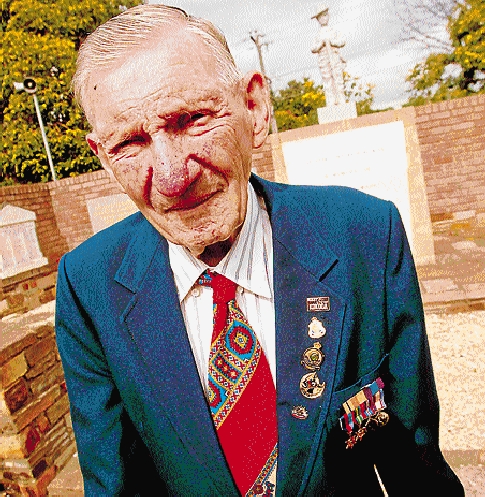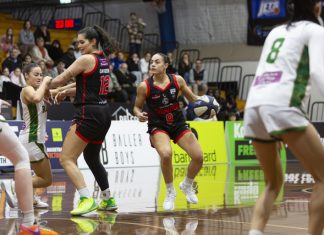THERE was no cake for John Jennings on his 21st birthday.
No presents, no warm hugs from family and certainly no party streamers.
John and his mates had already experienced their coming of age spending 1942 on the frontline of one of the most important struggles by Australian soldiers during the Second World War.
“I was in New Guinea with the 39th battalion. We were on Kokoda and it wasn’t easy – I couldn’t do it now!”
The 91-year-old Sunshine West resident recalls months spent slogging through mud and dense scrub, up and down treacherous mountainsides and across torrential rivers.
He still wears the scars, physical and mental, of his time on the track.
The 39th battalion suffered heavily in fighting, with 403 combat casualties among the 1666 men who served.
John remains modest about his involvement at Kokoda, a crucial campaign in which outnumbered and underresourced Australian soldiers were able to hold off swarming Japanese troops.
“I lost a lot of good friends, I was really just hoping for the best. You find a target, squeeze a trigger and you just hope you will be OK.”
In 2006, then Governor-General, Major General Michael Jeffrey, described the 39th Battalion as some of “Australia’s most gallant soldiers” .
The Australian nation was indebted to them for “their heroic service”, he said.
John points out many of the troops were really just young boys, exhausted, half-starved and facing their own private hells.
“I would cry myself to sleep some nights, wrapped around my gun.”
The reality of battle was a long way from the adventures John had expected when he joined the Light Horse Regiment of the Australian Army in 1938 – still only 17 – but pretending he was 18. While many of his memories are fraught with grief and loss, he can still have a laugh about the time as well.
“The meals could certainly have improved. It was bully beef [canned corned beef], bully beef or bully beef.”
When the 39th was recalled to Australia, having held back the Japanese tide, John thought his war days were behind him.
But he was soon back in the thick of battle, this time in the trenches of Borneo.
“We hadn’t been in trenches in Kokoda, this was a different kind of fighting.”
John recalls bullets “flying to the left, flying to the right”, but was lucky never to be hit.
When the Japanese surrender finally came on September 2, 1945, there was jubilation among the battle-weary men.
“We all just said, ‘You bloody beauty!’.
“It meant we were finally going home.”
While his 21st birthday may have been a fizz, he has made up for it since by sharing his birthday and wedding anniversary with Anzac Day.
John Jennings believes the day is an important way for younger Australians to recognise the sacrifices made by earlier generations.
“I think of all the ones I was with who are not with me any more.”
*Sunshine RSL will hold a service from 6am tomorrow with gunfire salute at 6.45. East Keilor RSL’s dawn service will be at Neil Heinze Reserve cenotaph.
*As part of Fairfax Media’s Anzac Project, readers can pay tribute to fallen soldiers by sending through images to honour family members who gave their lives during the war.








